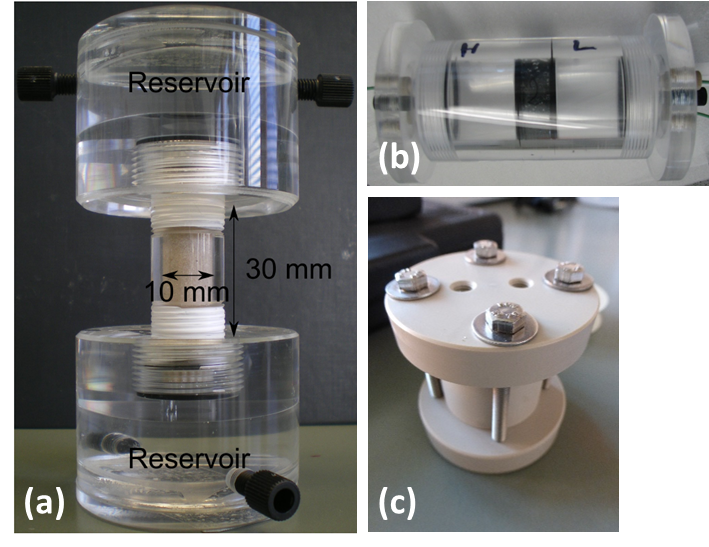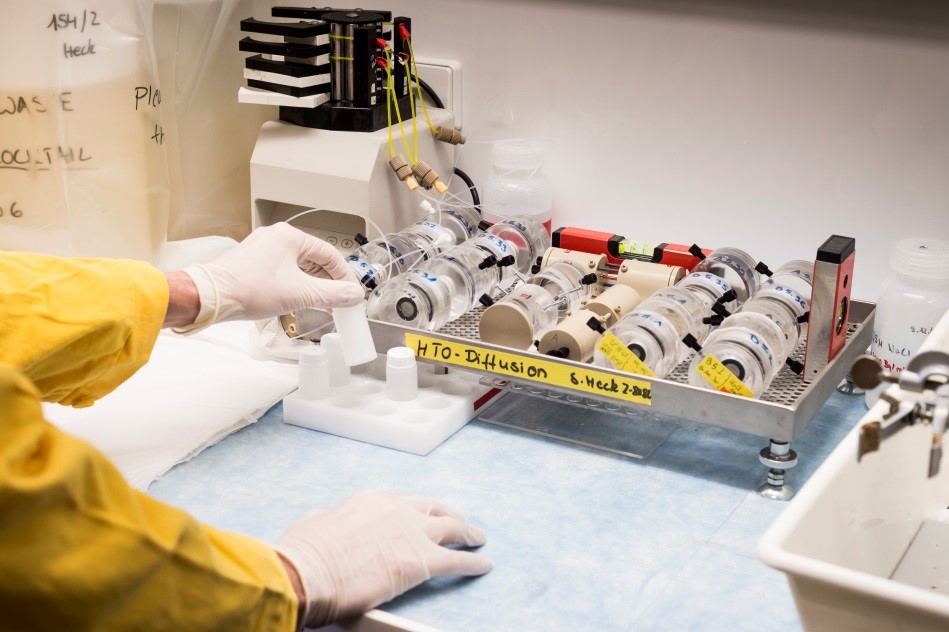Geotechnical barrier / geosphere
This subtopic of the Department of Disposal systems/components deals with the migration of contaminants through rocks, minerals, and backfill material. Here, the research is focused on the transport of radionuclides due to the expertise of the Institute for Nuclear Waste Disposal, in particular with regard to the possible radionuclide release in repositories for nuclear waste. Potential geotechnical or, in some cases, geological barriers consist of compacted or sedimented porous material. Under these conditions, molecular diffusion is the main transport process.
Experiments with compacted clay minerals, natural clay rock, and cement mixtures are conducted in the working group geotechnical barrier/geosphere. These are performed under aerobic and anaerobic conditions as well as at different partial pressures of CO2. One of the objectives of the group is to determine diffusion parameters of repository-relevant radionuclides under a wide range of conditions (e.g., temperature) by applying the empirically determined Fick’s laws. Another focus is the investigation of the underlying interaction processes during the diffusion of ions through porous material.
Experimentally, through-diffusion is a common method to determine diffusion parameters. Thereby, the compacted porous material is placed in a diffusion cell (Fig. 1), which is connected to a source and a receiving reservoir. The radioactive tracer will be added to the source reservoir, the flux of the diffusing tracer will be detected in the receiving reservoir as a function of time (Fig. 2). In the case of tracers, which sorb strongly under environmentally relevant conditions, such as U-238 or Np-237, the in-diffusion method is used. In this case, the detection of the tracer in the receiving reservoir is not expected in an experimental time frame. Therefore, the diffusion parameters are determined based on the depth profile the radioactive tracer has left in the porous material.
The thermodynamic, kinetic, and transport parameters obtained by the experiments shall contribute to safety and performance assessment models of nuclear waste repositories.
Due the interdisciplinary topic, the working group Geotechnical barrier/geosphere is working intensively together with the other working groups of the Institute for Nuclear Waste Disposal.
Contact:
+49 721 608-23535


